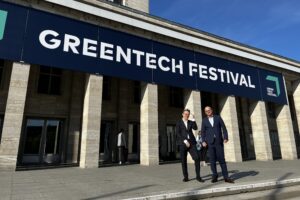Helm – How to Simplify Kubernetes Management?
It's worth knowing! What is Helm, how to use it, and how does it make using a Kubernetes cluster easier?
 Author:
Author:In an era of growing environmental awareness, more and more companies are looking for ways to reduce their impact on the environment. Software development is no exception – applications can generate a significant carbon footprint, especially if they are poorly optimized. Did you know that data centers are responsible for about 1% of global energy consumption? The good news is that developers can actively reduce CO2 emissions by optimizing code, infrastructure, and application architecture. Check out our practical tips!
The more optimized the code, the less resources the application consumes. Here are some key principles:
The right system architecture can significantly reduce energy consumption:
Data processing and storage has a huge impact on the carbon footprint of an application. How can it be optimized?
Frontend is not just about UX, but also about environmental impact. Here are some ways to make your apps more energy-efficient:
Regular testing and optimization are key to minimizing energy consumption:
An eco-friendly approach to software development is not only a trend, but also the responsibility of developers. Code optimization, choosing energy-efficient technologies, data management, and regular testing can significantly reduce the carbon footprint of your application. By implementing the above practices, you not only reduce infrastructure costs, but also contribute to environmental protection.
Does your company already apply these principles?

Helm – How to Simplify Kubernetes Management?
It's worth knowing! What is Helm, how to use it, and how does it make using a Kubernetes cluster easier?
AdministrationInnovation

INNOKREA at Greentech Festival 2025® – how we won the green heart of Berlin
What does the future hold for green technologies, and how does our platform fit into the concept of recommerce? We report on our participation in the Greentech Festival in Berlin – see what we brought back from this inspiring event!
EventsGreen IT

Minimalism in Software Design: Simple Interfaces, Greater Efficiency
Discover how minimalist software design enhances user experience, reduces energy consumption, and supports green IT strategies through clean, efficient, and eco-friendly custom applications.
Green ITInnovation